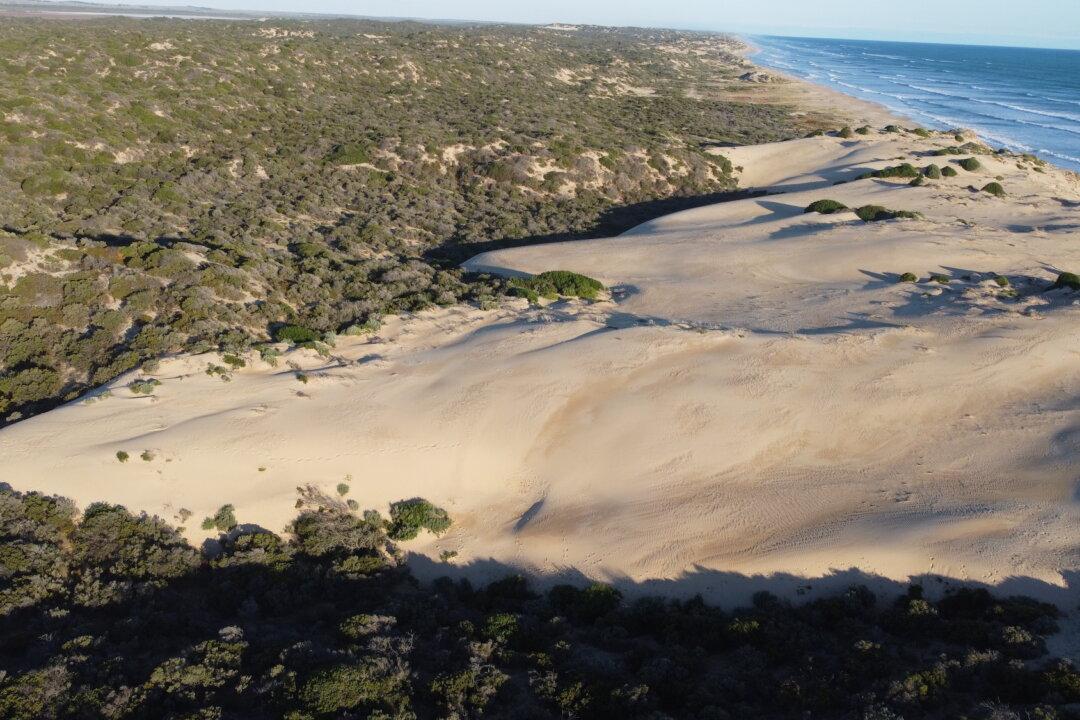Sand dunes lining Australia’s longest beach are marching inland the width of a tennis court each year, due to rapid erosion triggered by the heightened lapping of the Southern Ocean.
Measurements painstakingly gathered by Flinders University scientists reveal a central section of shoreline along South Australia’s Younghusband Peninsula is disappearing at a rate of 3.3 metres annually.





